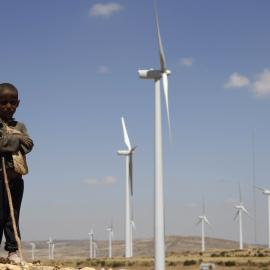In their recent essay (“Show Them the Money,” May/June 2014), Christopher Blattman and Paul Niehaus argue that cash grants are more effective than traditional forms of aid, especially asset transfers in the form of goods and livestock.
Blattman and Niehaus are right that the asset-transfer model is not perfect: the nonprofit sector needs greater transparency and accountability, and microcredit has a weak record of success. But they overstate the cost-effectiveness of cash grants and overlook the fact that cash alone cannot address the root causes of poverty.
First, contrary to Blattman and Niehaus’ suggestion, studies show that asset-transfer programs are both cost effective and effectual. In 2011, researchers at Western Michigan University evaluated Heifer International programs in Albania, Nepal, and Uganda. For every $1 Heifer spent in Uganda, families gained an average of $1.25 in income and $2.81 in total assets. Families saw similar gains in Albania and Nepal.
How does cash compare? In an article in the Stanford Social Innovation Review, Kevin Starr and Laura Hattendorf calculated the cost-effectiveness of a cash-grant program in Uganda, one of several mentioned by Blattman and Niehaus. When computed for three-year gains, the cost-effectiveness of that program was just $1.03 for every $1 given in grants.
In addition, although cash grants can and do alleviate poverty for those in low-income communities, no evidence suggests that these programs lead to long-term, sustainable community development. People who receive cash grants spend the money on immediate needs or on starting a business. The root causes of poverty -- discrimination, lack of education, environmental destruction, corruption, violence -- may render any short-term gains fleeting.
Blattman and Niehaus say that people are poor “because they lack resources and opportunities -- things that, in many places, money can buy.” If it were so simple, remittances would be more successful at ending poverty over the long term. The World Bank estimates that migrant workers sent $414 billion home to developing countries in 2013, almost four times the amount of foreign aid given by national governments. If more than $400 billion a year in remittances isn’t working, donor-funded cash grants are unlikely to provide a superior solution.
Heifer International, the nonprofit I head, works with communities to end hunger and poverty through asset transfers. Why don’t we simply give our participants cash and let them choose whether or not to buy livestock with it? When people use cash grants to purchase livestock, they typically have access to only local breeds, most of which are not highly productive. Heifer, on the other hand, purchases livestock with better genetics and provides training to farmers, resulting in higher productivity and, ultimately, greater profits.
PIERRE U. FERRARI
President and CEO, Heifer International
